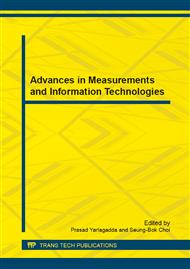p.101
p.105
p.109
p.113
p.117
p.127
p.131
p.136
p.141
Study of Improvement of Measurement Precision for Roundness Measuring Instrument
Abstract:
Based on the requirement of small errors in measuring roundness (cylindricity) error, a leveling methodology which using a dual-point vertical layout has been put forward and analyzed. According to the direction cosine of the axis of workpiece, the amount of leveling has been defined and calculated, which overcomes the problem brought by manual adjustment technology and forms theoretical bases of fast, accurate leveling and high precise measurement. The assessment of roundness (cylindricity) error is to search for a center (cylinder axis) which satisfies the minimum condition. Due to the reliance of initial solutions and relative slowness in terms of convergence precision and convergence rate when using Nelder-Mead simplex method, a combinative method of Quasi-Newton and N-M simplex method has been proposed which achieves a fast, accurate search for global optimums. With the proof of the simulation of classical testing functions using Matlab and the measured data, the convergence rate and precision will be enhanced effectively has been certified with the combination of both methods mentioned above which ensuring and improving the measuring precision of workpiece.
Info:
Periodical:
Pages:
117-126
Citation:
Online since:
February 2014
Authors:
Price:
Сopyright:
© 2014 Trans Tech Publications Ltd. All Rights Reserved
Share:
Citation:


